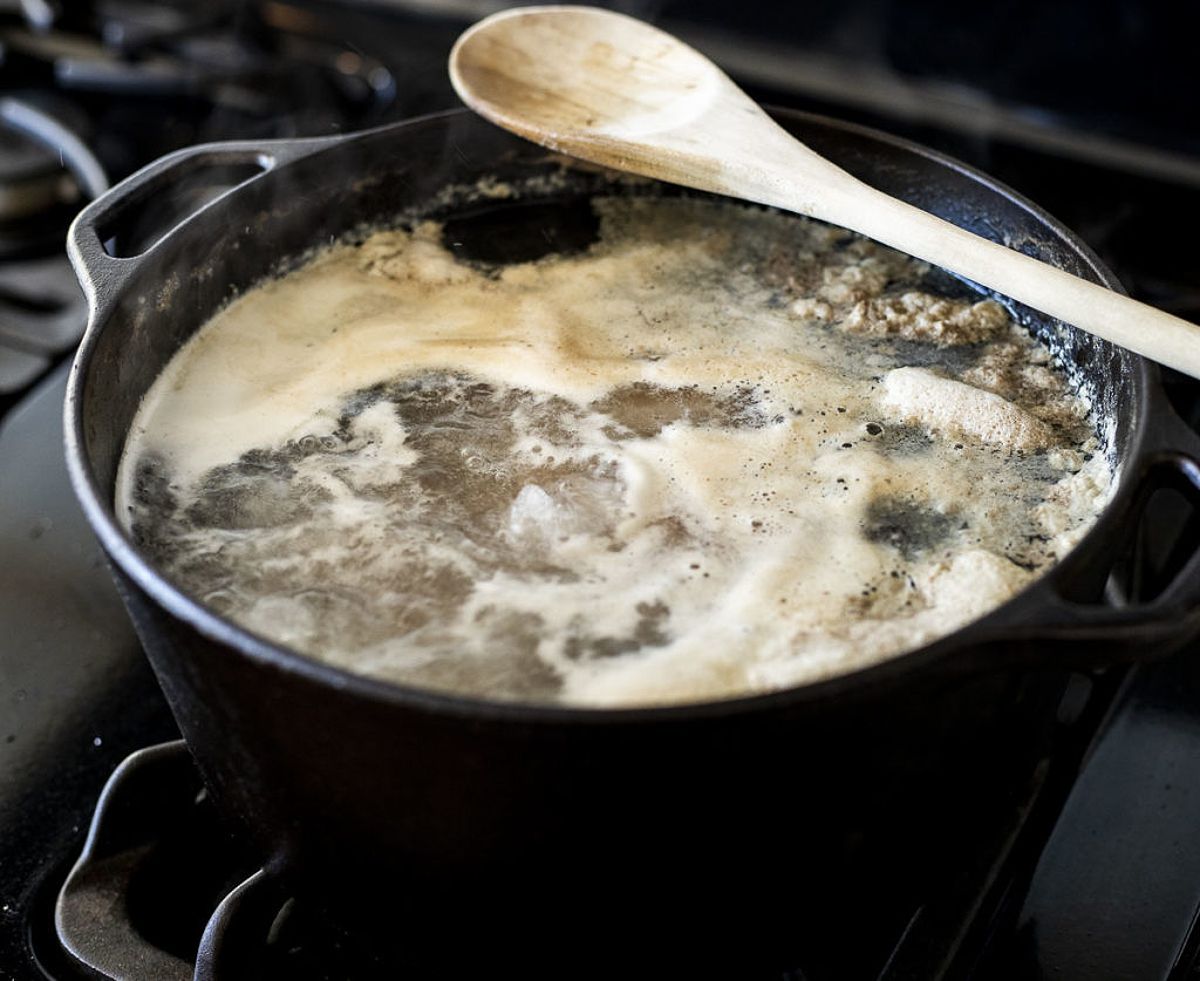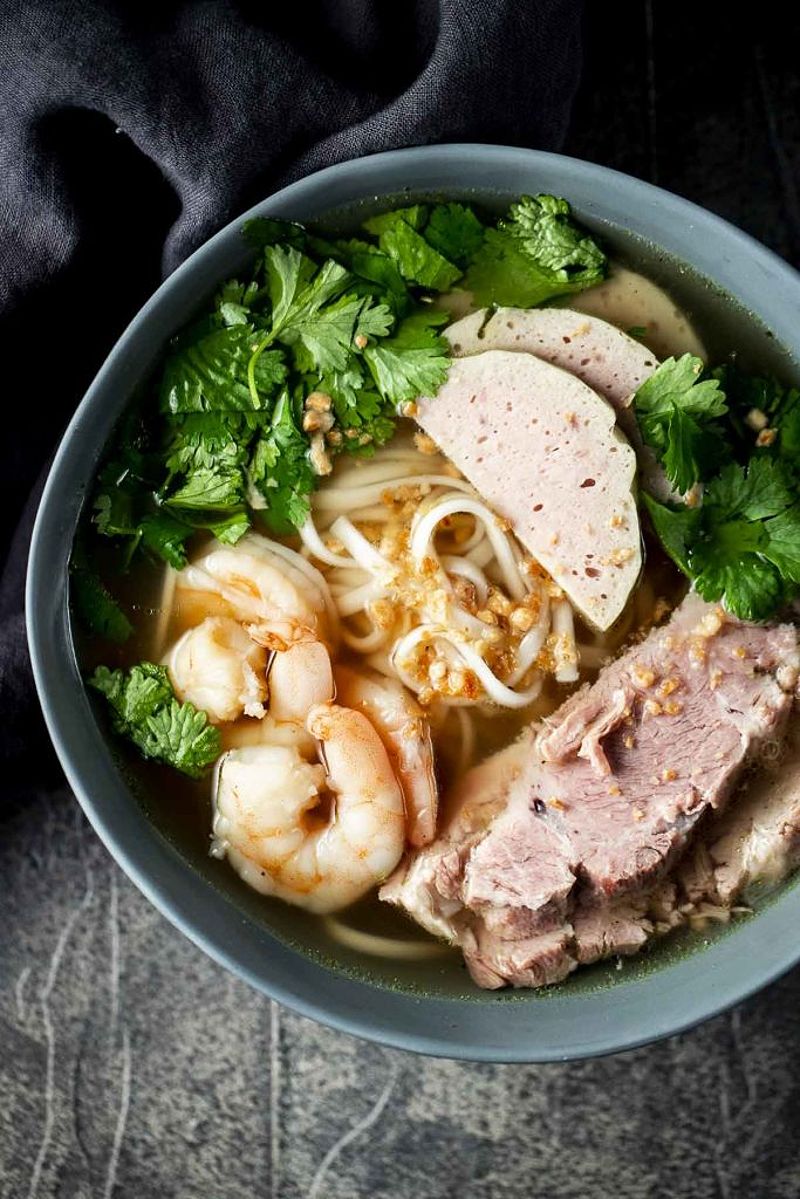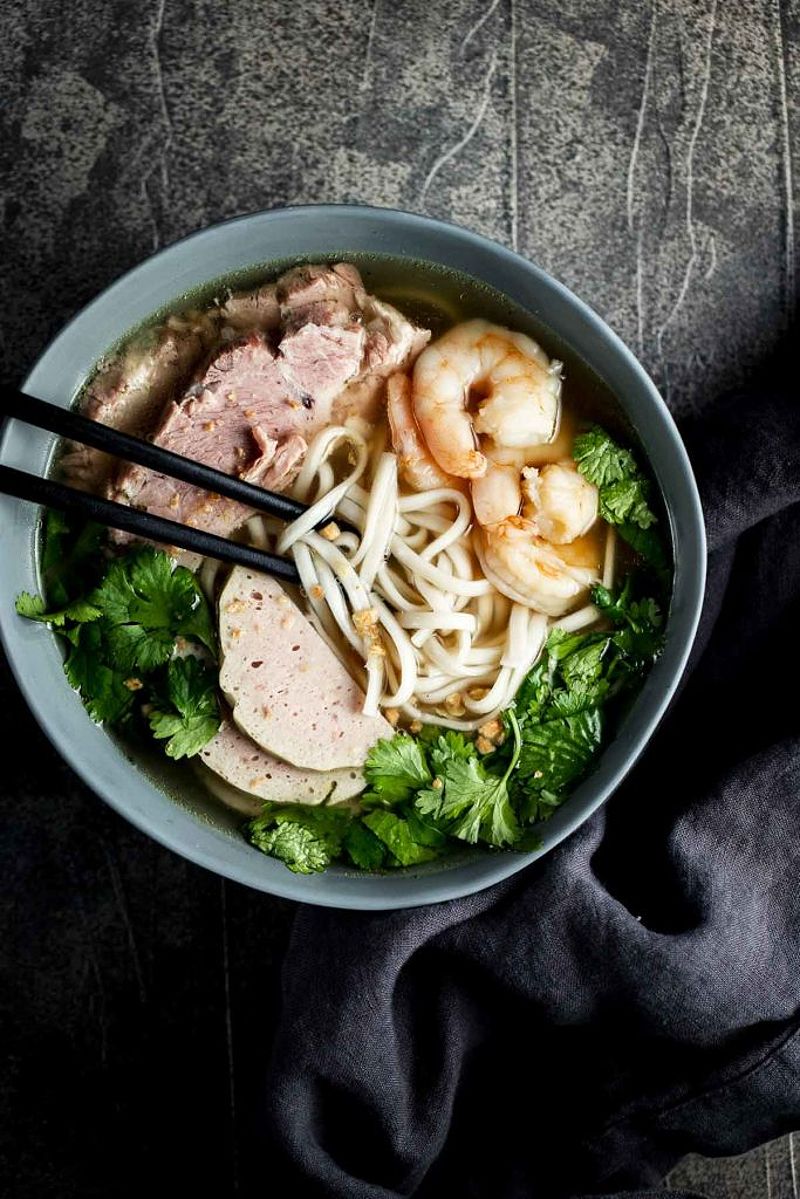In the vibrant culinary landscape of Vietnam, there exists a dish that has the power to warm the soul and captivate the senses – the Vietnamese thick noodle soup, known as Banh Canh. As an experienced content writer, I’m thrilled to share with you the secrets to crafting this beloved masterpiece, a true representation of the country’s rich gastronomic heritage. This article will explore the art of making Vietnamese thick noodle soup Banh Canh.
Unveiling the Essence of Banh Canh
Banh Canh is a traditional Vietnamese noodle soup that has been passed down through generations, with each household putting its own unique spin on the recipe. At the heart of this dish are the thick, chewy noodles, made from a harmonious blend of tapioca and rice flour. These noodles, often compared to the beloved Japanese udon, form the foundation upon which the entire dish is built.
But Banh Canh is more than just the noodles; it’s a symphony of flavors that captivates the senses. The broth, simmered with pork bones, onions, and a medley of aromatic spices, is a true work of art. The result is a rich, savory, and intensely flavorful liquid that serves as the perfect canvas for the remaining components. While the classic version features tender pork slices, variations can include a variety of proteins, such as succulent shrimp, delicate fish cakes, or even the decadent crab (Banh Canh Cua).
Crafting the Perfect Vietnamese Thick Noodle Soup Banh Canh Broth
Selecting the Right Pork Bones
The foundation of an exceptional Banh Canh lies in the broth, and the selection of pork bones is crucial. The most commonly used bones are the neck bones and spareribs, which lend a depth of flavor and a slightly gelatinous texture to the soup. These bones contain a harmonious balance of meat, bone, and connective tissue, ensuring a well-rounded and complex broth.

Alternatively, you can opt for pork hocks or even a combination of different bone cuts. The hocks, in particular, add a rich, unctuous quality to the broth. However, pork hocks can be more challenging to find in some regions, so the neck bones and spareribs remain the go-to choice for many home cooks.
Simmering to Perfection
Once the pork bones have been selected, the real magic begins in the simmering process. The bones are typically blanched first to remove any impurities, ensuring a clear and clean-tasting broth. Then, they are simmered for a minimum of two hours, allowing the flavors to meld and the collagen to slowly release, creating a silky and nourishing base.

During the simmering process, it’s essential to skim the surface regularly to remove any foam or scum that rises to the top. This step helps to maintain the broth’s clarity and purity of flavor. The low and slow cooking method is key, as it allows the natural sweetness of the pork to infuse the liquid, creating a truly balanced and harmonious broth.
Seasoning with Vietnamese Flavors
Once the broth has simmered to perfection, the seasoning process begins. This is where the distinct Vietnamese flavors come into play. Fish sauce, a staple in Vietnamese cuisine, is added to the broth, providing a savory and umami-rich depth. A touch of sugar helps to balance the saltiness, while a sprinkle of salt and a pinch of ground black pepper round out the seasoning.
For an extra layer of complexity, some cooks also incorporate a dash of bouillon powder, which enhances the porkiness of the broth. This optional ingredient can be especially useful if the broth needs a little extra oomph.
The Star of the Show: Banh Canh Noodles
The foundation of Banh Canh lies in the thick, chewy noodles that give the dish its signature texture. These noodles, typically made from tapioca flour or a combination of tapioca and rice flour, have a unique and satisfying bite that sets them apart from other Vietnamese noodle soups.

Finding authentic Banh Canh noodles can be a challenge outside of Vietnam, but there are plenty of suitable substitutes. Udon noodles, with their similar thickness and chewiness, make an excellent stand-in for the traditional Banh Canh variety.
When preparing the noodles, it’s crucial to properly warm them before adding them to the hot broth. This helps to prevent them from becoming overly soft and mushy. Gently warming the noodles in the microwave or briefly dunking them in boiling water can make all the difference in achieving the perfect texture.
Adding Flavorful Toppings and Garnishes
While the broth and noodles are the foundation of Banh Canh, the toppings and garnishes are what truly elevate the dish to new heights.
Meat and Seafood Options
The traditional Banh Canh features tender slices of pork, often from the shoulder cut, which provide a delightful contrast to the chewy noodles. For those who prefer a more diverse protein selection, Vietnamese sausage (Cha Lua) and fried fish cakes are popular additions, adding layers of flavor and texture.

For a seafood twist, succulent shrimp can be marinated in a blend of fish sauce, sugar, and spices before being quickly seared and added to the soup.
Fresh Herbs and Garnishes
No Banh Canh bowl is complete without a generous sprinkle of fresh herbs, such as cilantro and scallions. These vibrant greens not only add a pop of color but also infuse the dish with a refreshing, aromatic quality.

Additionally, crisp bean sprouts and a squeeze of fresh lime or lemon can provide a welcomed contrast to the rich, savory broth.
Tips and Tricks for a Perfect Bowl of Banh Canh
- Adjust the broth’s thickness and flavor by simmering the noodles directly in the soup. The starch from the noodles will help to thicken the broth.
- For a visually appealing presentation, arrange the toppings in a visually striking manner, allowing the colors and textures to shine.
- If you have leftovers, store the noodles and broth separately. This will prevent the noodles from becoming overly soft and waterlogged.
- Experiment with alternative protein options, such as tofu or mushrooms, for a delicious vegetarian or vegan version of Banh Canh.
Exploring the Versatility of Banh Canh
One of the remarkable aspects of Banh Canh is its versatility. While the traditional version is a beloved staple, there are numerous regional variations that showcase the diversity of Vietnamese cuisine.
Banh Canh Cua: Crab-Infused Delight
In the coastal regions of Vietnam, Banh Canh Cua is a popular twist on the classic soup. This version incorporates succulent crab meat, which adds a sweet, briny flavor that perfectly complements the rich broth and chewy noodles.
Banh Canh Tom: Shrimp-Studded Goodness
For seafood enthusiasts, Banh Canh Tom offers a delightful alternative. Juicy shrimp, marinated in a blend of Vietnamese spices, are the star of this variation, creating a harmonious dance of flavors and textures.
Banh Canh Gio Heo: Pork Hock Indulgence
The Banh Canh Gio Heo version showcases the decadence of pork hocks, which lend a gelatinous and unctuous quality to the broth. This hearty and comforting rendition is a true testament to the ingenuity of Vietnamese home cooks.
FAQ
Q: What are some common variations of Banh Canh?
A: Banh Canh can be found in various forms, including Banh Canh Cua (with crab), Banh Canh Tom (with shrimp), and Banh Canh Gio Heo (with pork hocks).
Q: Can I use other types of noodles instead of Banh Canh or udon?
A: While Banh Canh or udon noodles are the traditional choices, you can experiment with other types of thick, chewy noodles, such as tapioca or rice sticks, if they are more readily available in your area.
Q: How can I make a vegetarian or vegan version of Banh Canh?
A: To create a vegetarian or vegan Banh Canh, you can omit the pork and seafood toppings and focus on vegetables, tofu, or mushrooms as the protein source. Adjust the broth by using a vegetable or mushroom-based stock instead of the traditional pork bone broth.
Q: What are some good side dishes to serve with Banh Canh?
A: Banh Canh pairs well with various Vietnamese side dishes, such as fresh spring rolls, nem nuong (grilled pork sausages), and Vietnamese-style pickled vegetables.
Conclusion
The Vietnamese thick noodle soup, Banh Canh, is a true testament to the culinary diversity and depth of Vietnamese cuisine. With its rich, savory broth, chewy noodles, and delightful toppings, this dish is a must-try for anyone who appreciates the harmonious blend of flavors and textures. By following the tips and techniques outlined in this guide, you can create a Banh Canh that will transport your taste buds straight to the bustling streets of Vietnam.
Whether you opt for the traditional pork-based version or explore the captivating regional variations, the art of mastering Banh Canh lies in embracing the essence of Vietnamese culinary traditions. So, grab your chopsticks, dive into a steaming bowl of this comforting delight, and let the flavors of Banh Canh enchant your senses.


